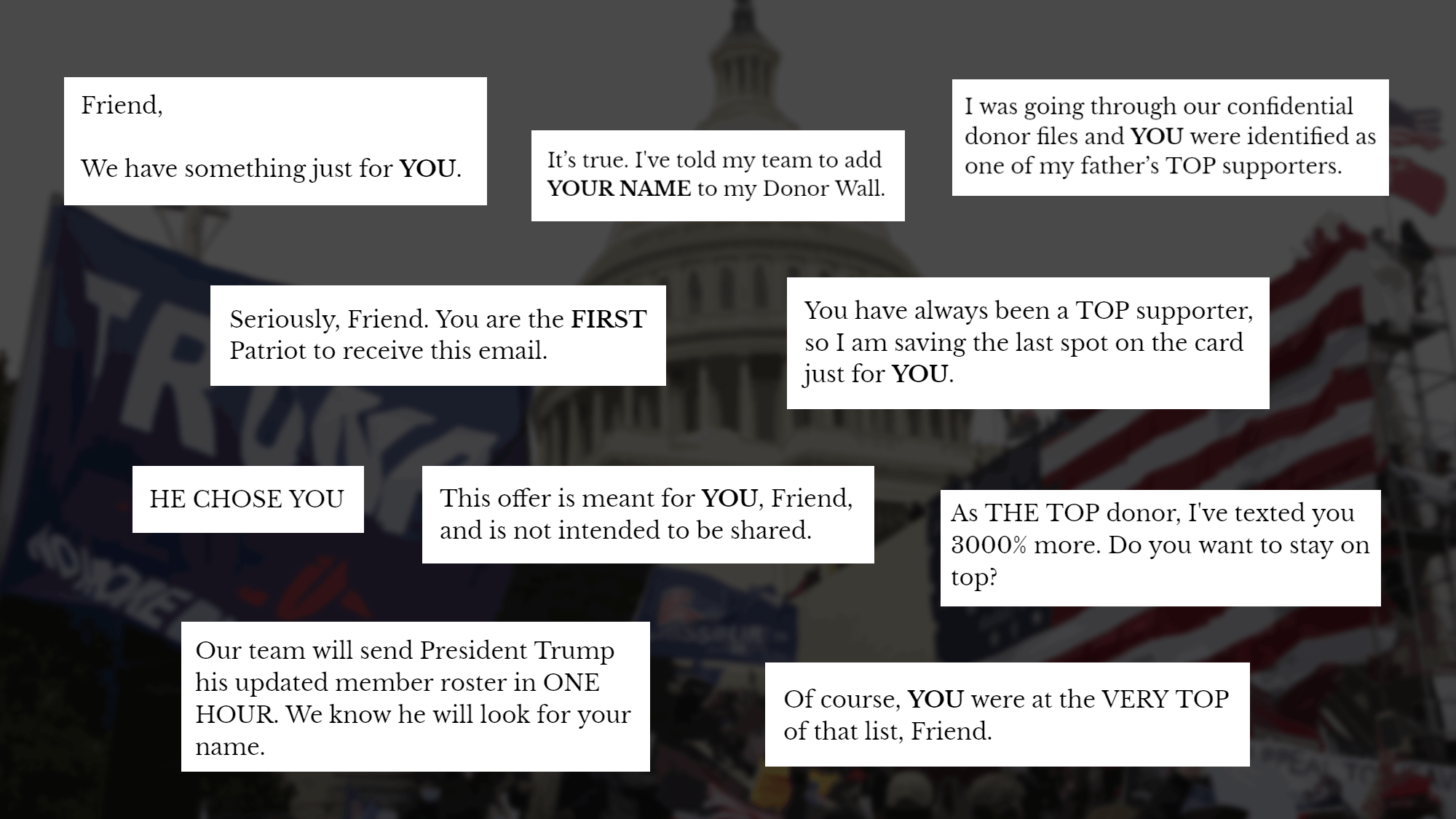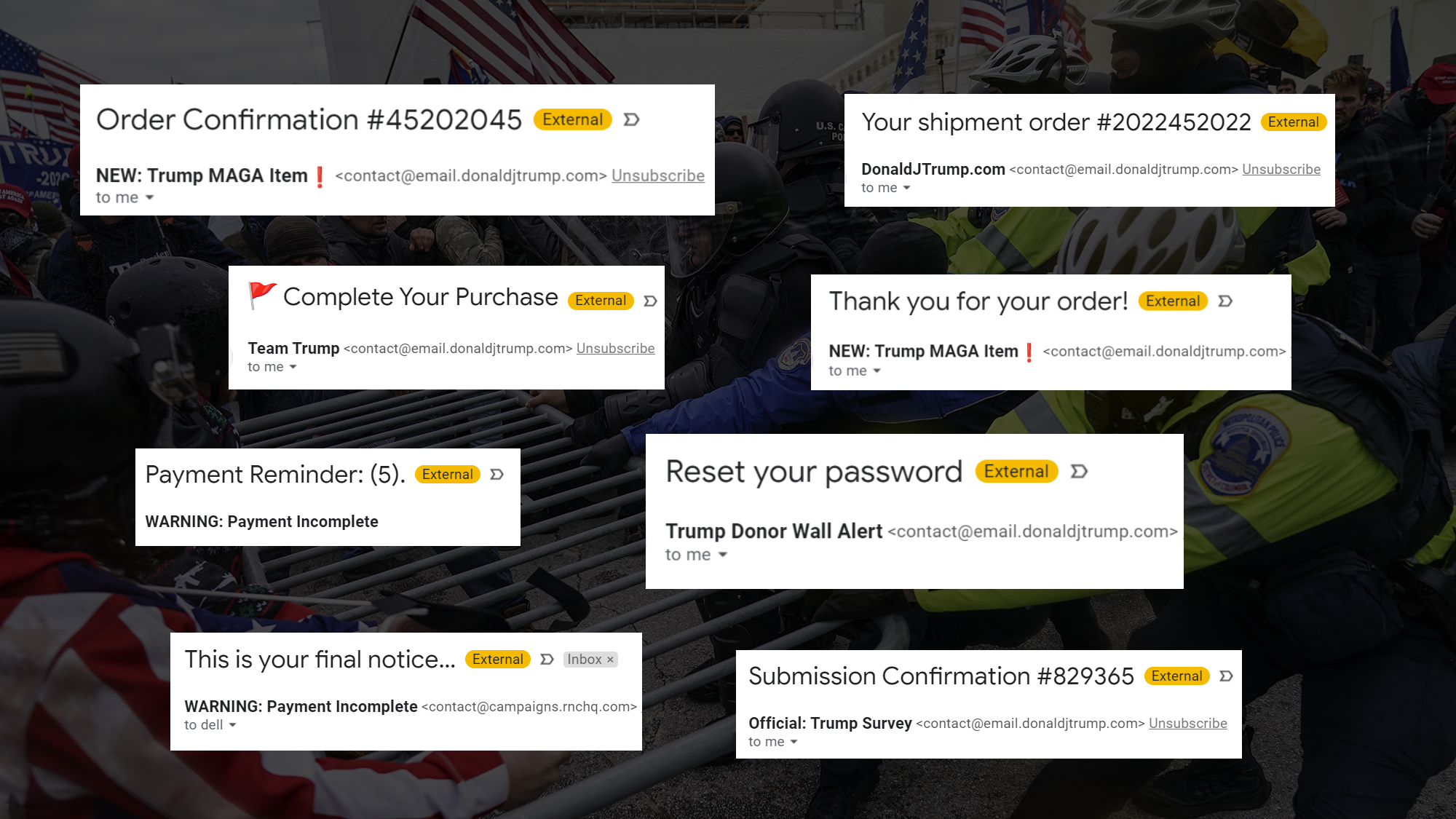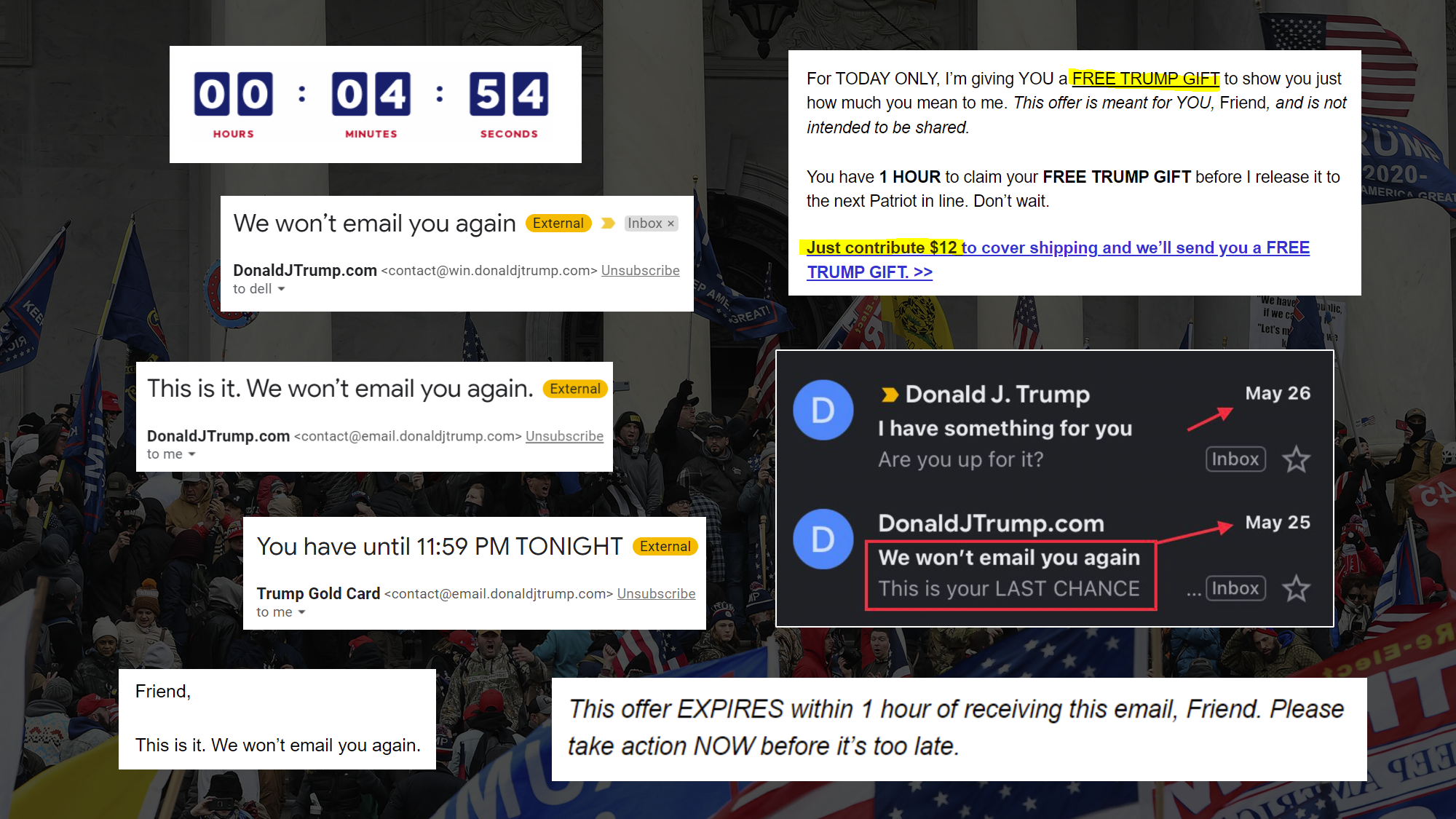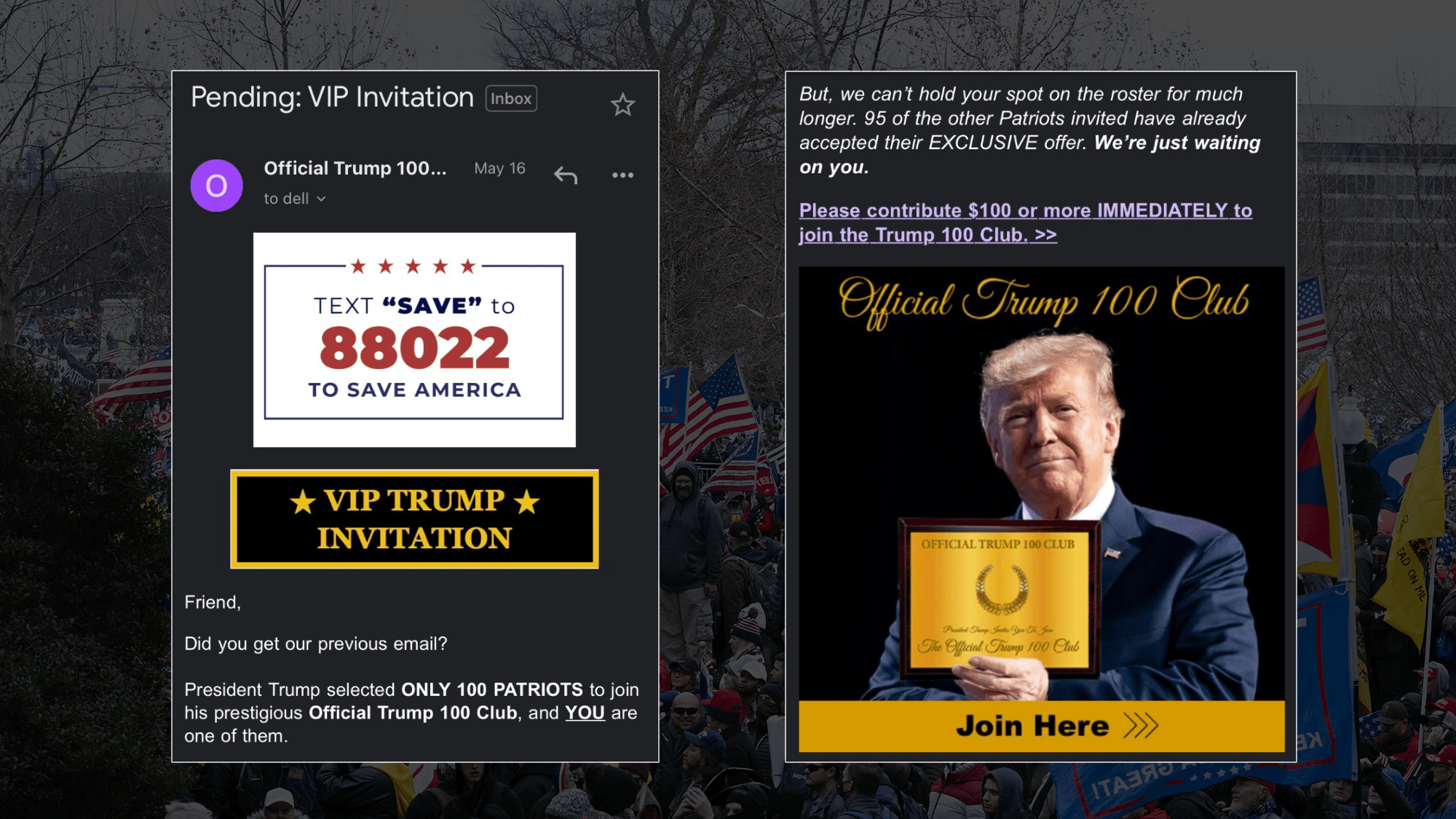The House Select Committee investigating former President Donald Trump’s role in fomenting the Jan. 6 insurrection at the U.S. Capitol has shone a spotlight on his efforts to fundraise off the back of his erroneous election fraud claims.
After a hearing earlier this week, Rep. Zoe Lofgren, a Democrat of California and a member of the committee, said of Trump’s $US250 ($360) million “Official Election Defence Fund,” “The big lie was also a big ripoff. He intentionally misled his donors, asked them to donate to a fund that didn’t exist and used the money raised for something other than what it said.”
On Tuesday, New York Attorney General Letitia James, already in the midst of a yearslong probe into alleged fraud and tax evasion at the Trump Organisation, tweeted, “The new details revealed tonight related to January 6 are disturbing. It’s my duty to investigate allegations of fraud or potential misconduct in New York. This incident is no exception.”
Trump campaigned throughout his presidency and sought donations from supporters at every opportunity both in person and online. For years, Gizmodo has been collecting emails his campaign has blasted out begging for cash. What we’ve found is that the ex-president has a penchant for the kinds of sales tactics more commonly associated with subprime mortgage loans, odometer-rolling used car salesmen, and shady internet businesses that rely on duping unsophisticated customers.
Unconvinced? Let’s take a closer look at how the Trump campaign managed to amass a warchest worth a quarter of a billion dollars.
This Email’s For You — Specifically

Let’s start with something light. The most common tactic we see in Trump’s fundraising efforts is one designed to make supporters feel as if they’ve been selected by the former president personally over literally millions of other people. Dozens, if not hundreds of emails heavily imply that no one except for the recipient has been contacted. But this is a lie. It’s not the gravest of crimes, and its one that other politicians are guilty of as well, but it is a tactic considered to be a warning sign of scam. Don’t take it from me, ask the Texas Attorney General Ken Paxton, a Republican and Trump devotee. He warns of this specific tactic on his website under the heading: “How to Spot and Report Mail Scams.” On a list of common warning signs, claims that “you have been specially selected,” is number one.
On average, around 6.9 of these emails have been sent out a day, according to the nonprofit Defending Democracy Together Institute, which has been collecting political fundraising emails for over two decades.
Reset Your (Non-Existent) Password

This is next tactic falls more squarely into confidence trick territory. Trump fundraisers are pretty savvy when it comes to taking advantage of subject lines, which are the first, and potentially only thing his supporters will see when a new message arrives. Many of these lines mimic the tactics that are more commonly associated with phishing emails, usually designed to convince hackers’ victims to surrender passwords and other sensitive information. Emails requesting donations have, in the past, included claims that supporters are required to “reset” nonexistent passwords, while others imply that a payment is required, or that one is already being processed.
Other attempts are designed to confuse supporters into thinking they’ve already placed an order for some kind of merchandise — a campaign t-shirt or a set of Trump-themed golf balls, for instance. Some of these emails include a fake order confirmation numbers or imply a shipment is already on the way.
These fake order numbers are not unique, according to Defending Democracy’s database. Millions of these emails were sent out and all of the numbers are exactly the same.
URGENT, NOW, TONIGHT: ‘This is It. We Won’t Email You Again.’

Another high-pressure sales tactic employed by the Trump campaign attempts to put supporters on alert via a false sense of urgency. It accomplishes this by suggesting that if money is not given within the next hour, or by the end of the day, that something bad might happen. Some claim to contain exclusive offers and suggest they’ll evaporate soon.
Another method used to manipulate his supporters’ emotions relies on threats that Trump will start ignoring them (unless they give him money). Gizmodo has received at least dozens of emails over the years attributed to Trump suggesting he plans to break off contact. (“We won’t email you again,” is a line that gets repeated over and over.) But, of course, this too is a lie. Inevitably another email will hit our inbox, occasionally within hours.
At least one of these emails has included a fake “countdown” timer that’s meant convince supporters they have mere minutes to send Trump money. The timer never actually reaches zero. It starts at 05:13 minutes, counts down to 04:39, and then restarts at 05:13. Ingenious.
‘VIP Trump Invitation,’ Repeated Over and Over

The email above, dated May 16 of this year, is potentially one of the most flagrant attempts to dupe supporters we’ve seen. It claims that the Trump organisation operates something called the “Official Trump 100 Club.” This is purportedly a “prestigious” club comprised of only 100 people who were personally selected by Trump. “YOU are one of them,” the email says. To join, you only need to send Trump $US100 ($144).
Invitations to join the club have been going out for years. It would seem impossible that only 100 people have fallen for this so far. An email from January 2020, for instance, informed followers they’d been “selected as 1 of the 100 Patriots in the entire Nation who President Trump invited to join the Trump 100 Club.” More than 50 emails inviting supporters to join the club have gone out so far. As for how many supporters have fallen for this particular trick, only the Trump organisation knows for sure.
Where Does It All Go?

According to an analysis of Federal Elections Commission records this week by the Washington Post, nearly two-thirds of the people who donated to one of Trump’s political action committees, Save America, listed their occupation as “retired.” Based on that alone, there’s at least a chance that the majority of the people falling for these emails are over the age of 60.
Where is all this money going? No one seems to know. While Trump claims that these funds are earmarked to combat “voter fraud,” the truth is, he can spend it however he likes. Per the Post: “The money in the Save America PAC, unlike money contributed to a standard campaign committee, can be used to benefit Trump in innumerable ways. Memberships at golf clubs. Travel. Rallies. Even payments directly to Trump himself, as long as he declares it as income.”
In addition to this leadership PAC, Trump has also operated a super PAC called the Make America Great Again PAC, or MAGA PAC. Disclosures on fundraising emails dated as recently as this week suggest that money is being shared between the two through what’s called a joint-fundraising committee. Typically, JFCs are established by “two or more candidates” looking to combine their fundraising efforts — but in this case, the only person he seems to be joining is himself.
